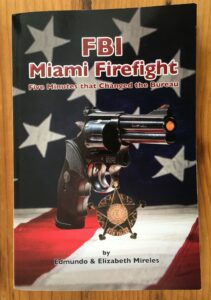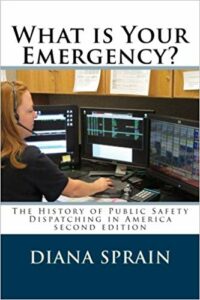President’s Message

We’re right in the middle of one of the most exciting times for the PSWA. The 2019 Writing Competition entries are all numbered and heading to the judges. Soon our association will welcome a new crop of Award-Winning Authors to our ranks. So many of you are waiting anxiously to see if you too will be able to place that gold sticker beside your name. Several of our past award winners have had their publisher place it right on their book cover during printing. For those soon-to-be 2019 winners, you’ll be joining a great group of writers. A special group within our already special group.
Also during this time, our Conference Chair Mike Black is putting the finishing touches on the program for the 2019 PSWA Conference taking place in Las Vegas this July. A lot of work goes into making sure that the three day conference has what our members want including great presenters and panels that cover information that will make our writing better. Like past years, the panels will focus on writing tactics, as well as, public safety topics. You’ll walk away knowing both where to place the comma and where to place the body so it’s believable. Where else can you get that kind of information in one place?
As your Board of Directors focus on preparing our year’s main event, I hope that each of you are also preparing. Make sure you’ve registered for the conference at the earliest rate possible to save money and booked your room at the Orleans before the conference rate expires. You don’t want to miss out on all the fun. Year after year, we get feedback from our attendees that the best part of this whole thing is the networking. We will have publishers available to hear your pitches. There will also be plenty of time to get to know your fellow members who have run the gauntlet in getting their work published and are happy to share the secrets of their success and the pitfalls to avoid. The best thing for me about the conference is the encouragement. Writing can be a lonely pursuit and sometimes it takes years and years for our work to come to fruition. It’s nice to know I’m not alone and to get the boost that I need to just put my head down and keep on working.
I hope to see many of you in Vegas and can‘t wait for Sunday’s Awards Ceremony. Until then, keep on writing.
Michelle J.G. Perin-Callahan, MS, QMHP, EMT
PSWA President
Five Reasons to Write Short Works
 We all know that the days of a writer being able to pay a month’s rent on short story or article writing disappeared decades ago. So why should you invest time and energy in work that takes away from the progress on your screenplay, novel, or non-fiction book? I’d like to share just five of the many good reasons for writing shorter works.
We all know that the days of a writer being able to pay a month’s rent on short story or article writing disappeared decades ago. So why should you invest time and energy in work that takes away from the progress on your screenplay, novel, or non-fiction book? I’d like to share just five of the many good reasons for writing shorter works.
Reason Number Five: Short Works Make Experiments Easy
You have a lot of ideas in your head, and you undoubtedly are slightly better at some writing skills than others. Spending a whole year on a novel with an experimental point of view (looking at YOU second person present tense!) would set your schedule too far back. But spending a week or three on an experiment can teach you a lot.
Maybe you’ve been writing in a hard-boiled voice that isn’t working the way you want. You can experiment with a story told in a softer tone, or from an unfamiliar perspective, to see how it goes. Maybe you’ll be as good as Megan Abbot at writing in the other gender’s voice, or as skillful as James Lee Burke at weaving setting into a story. Or maybe you’ll fall in love with narrative non-fiction. You’ll never know unless you experiment!
Reason Number Four: Short Works Win Awards
Short stories are eligible for most of the major writing prizes in crime writing. The PSWA gives awards for both fiction and non-fiction short work in our yearly writing competition. Once you win an award, you are forever after “an award-winning writer.” Winning an award can open the door to conversations with writers and editors who might not have been accessible before.
Even if you publish and don’t win an award, you build relationships with publishers, editors, and writers. I still interact with people who I was published with in my first Sisters in Crime anthology over a decade ago.
Reason Number Three: Short Works Open Doors
Charity anthologies and anthologies produced by writers groups are published frequently, and often have open submissions and blind reads—you don’t have to be famous or “know people” to be placed in the anthology. Plus, the reading research you do to find an anthology suitable for your genre and interest will teach you more about the industry and introduce you to new writers. A win win!
And some outlets do pay for short stories. Two national digests, Ellery Queen Mystery Magazine and Alfred Hitchcock Mystery Magazine publish a dozen or so stories every other month. While competition is fierce, new voices do get published. In fact, EQMM publishes a “new voice” short in every issue. Some charity anthologies pay writers a token payment ($10 – $25). You can’t make a living at it, but being paid can boost your confidence.
Reason Number Two: Short Works are Good Practice
Because there’s no time to waste in a short story or non-fiction piece, writing these works make you a better writer. Some writers don’t like to write short forms, and that’s just fine. But if you do enjoy taking a break from your work in progress (WIP), writing something short may help you focus on structure or characterization or forward momentum, or whatever you wish to focus on. Everything you learn about writing shorter works can be applied to longer ones.
Reason Number One: The World Needs Your Stories
After a few thousand “No” answers from publishers, agents, and editors, it can be easy to forget that your stories and articles contribute something to the world. You see the issues and experiences of humanity differently than every other person on this planet, and hearing from you makes us richer, smarter, more compassionate, and more fulfilled. If you take the time you spend on one sit com every week and put that towards a short piece, you’ll have something worth publishing by the end of the season. Whether it’s an article for this newsletter, a short story in an anthology, or something you put up on the Internet, I look forward to reading it!
—Mysti Berry
PSWA Treasurer and Web Wrangler
Look! Up In The Sky!
What to Do When the Police Helicopter is Overhead
 To the criminal element, these airborne cops are mockingly called “Big Brother in the Sky,” or “Ghetto Bird.” But not everyone feels that way about police helicopters. Sure, they are loud and annoying; causing all the neighborhood dogs to bark, interrupting your nightly TV pleasure, or “rudely” waking you at 2:00 a.m. with the “Whop-Whop” rotor sound and a bright light flickering in your bedroom window. However, most law-abiding citizens accept these occasional disturbances for the extra sense of security that this method of law enforcement provides.
To the criminal element, these airborne cops are mockingly called “Big Brother in the Sky,” or “Ghetto Bird.” But not everyone feels that way about police helicopters. Sure, they are loud and annoying; causing all the neighborhood dogs to bark, interrupting your nightly TV pleasure, or “rudely” waking you at 2:00 a.m. with the “Whop-Whop” rotor sound and a bright light flickering in your bedroom window. However, most law-abiding citizens accept these occasional disturbances for the extra sense of security that this method of law enforcement provides.
Although a high-budget item for any police agency, operational costs for these airborne units pay for themselves many times over each year. This is accomplished by the number of crimes they help solve, the safety and support they provide to police ground units, the lives they save during search and rescue efforts, and the overall comfort given to a community’s residents just in knowing that police officers are using this “eye-in-the-sky” method to deter criminal activity.
Did you know that one of these whirlybird machines can cover the same area as 15-20 street patrol officers? And for response to “hot” calls or crimes in progress, they are usually the first officers on the scene, directing responding patrol units on the ground to apprehend fleeing suspects.
Police helicopters can safely follow and observe criminals that are driving 90-mph through city streets. Many times, the guy who’s fleeing from the police has no idea the helicopter is following above and thus will slow down when pursuing patrol cars back-off the pursuit. This makes the incident safer by creating less potential for a traffic accident to some innocent driver or pursuing patrol officers.
Years ago, I flew police helicopters for LAPD. It’s amazing what you can see from 500 feet above the ground and how effective police work can be conducted from an aerial observation point. It’s always fun for the police pilots to see children running around excitedly and waving. But, while this is okay during routine patrol, it is not the best thing for residents to do when there is criminal activity or a major safety incident occurring in the area.
When you see a police helicopter repeatedly circling over your house or the general neighborhood, it usually means they are looking for a suspect. So, what should you do? Here are some good tips that will help the police pilots and responding units successfully complete their mission, as well as make the incident safer for you, your family, friends and neighbors.
What to Do at Home
- Don’t stand outside and wave your arms. Although police officers appreciate your excitement and willingness to be friendly, from the air we can’t distinguish what your gestures mean.
- If you have information on a possible suspect in your yard or running from the area, call 911. Otherwise, for any other suspicious activity, and you’re not sure if it is related to the air search, call the police non-emergency line and relay your information.
- Go inside your house. Close and lock all windows and doors. The fewer people out and about makes it easier to locate and identify possible suspects. Also, standing outside your house makes you a potential hostage for the suspect, and a means of him gaining forcible entry to your house.
- Bring your dog(s) inside the house. This will prevent a confrontation with K9s that may be used in the search. If officers are chasing a bad guy through backyards, the last thing they need is coming face-to-face with your dog and dealing with another threat.
- Turn on exterior lights. This will reduce and deter hiding places for the bad guy, and assist officers in their search.
What to Do in the Neighborhood
If a suspect is caught in your neighborhood, or you see a lot of police and emergency responder activity on your street, stay in your house. Don’t go to the scene and ask officers what is going on. If there are police cars, fire trucks, or ambulances at your neighbor’s house, then there is a problem. You don’t need to meddle into your neighbor’s business by asking what’s happening. Your curiosity, no matter how strong, is not a reason to violate your neighbor’s privacy. If it’s something that YOU need to worry about, the officers will knock on your door and tell you. Otherwise, it can wait until a later time.
What to Do When Driving
You have all seen TV videos of police chases and the accidents that tragically occur at intersections. If you happen to be driving and see the police helicopter’s bright light flickering on your vehicle or the street you’re driving on, you may want to pull over as soon and safely as possible.
Sometimes in these instances, the pilots are trying to alert you that a danger exists ahead. Often, they are following a vehicle pursuit, and the fleeing suspect has no interest in your safety. Look around and in your rear-view mirrors for flashing emergency lights. Roll down your window and listen carefully for the sound of sirens. Although rarely used, the police helicopter does have a PA system, and might find the need to use it to give instructions to citizens on the ground.
Once the helicopter leaves the scene, don’t try to follow its light beam action along streets to appease your curiosity. In other words, don’t be an “ambulance chaser.” If you want this kind of excitement, there are plenty of shows on TV to watch.
When Pigs Fly
As an FYI, be sure to check-out Thonie Hevron’s blog… Just the Facts, Ma’am. Under the link of “When Pigs Fly”, I have written a few stories about police helicopter pilots. Trust me, sometimes “boring holes in the sky” can get pretty monotonous. You won’t believe how these pilots and crews amuse themselves. https://thoniehevron.wordpress.com/
Until the next time, Stay Safe!
—Ron Corbin
PSWA Member
Delivering the Bad News . . . and Writing About It

Knocking on someone’s door to deliver a death notification is one of the least favorite tasks of a police officer. It’s a tough and emotionally draining assignment. Telling someone such bad news has to be done person to person, not by a phone call, email, social media or any other method. Telling it face to face means the right person gets the message and not that someone is playing a cruel joke over the phone.
For those that joined the police department anticipating the glamour jobs, the big investigations, arresting high profile suspects, the stuff movies are made of, this isn’t it. Delivering the bad news is right-down-in-the-trenches police work. If your writing character is a uniformed police officer you might be thinking about including a death notification in your story. Here’s how to make it authentic.
At the front door now. About to change someone’s life. Take a deep breath. Steady the nerves. Knock knock knock on the door. “Are you . . .? Yes? Could we come in?”
From there the officer gets to the point and delivers the news. Speak as gently as possible and don’t embellish it. Just tell what is known. No more, no less. In other words, don’t try to imagine how the person died or what those details might be. Don’t answer questions by guessing.
I delivered many death notifications and had many different reactions. One never knew what would happen after we broke the news. Some stared in disbelief. Others thanked us for delivering the bad news and said they were fine. Some just looked at the floor and cried. One flew across the room and attacked me. (“You f&*kin cops killed him!”)
It’s best to have two officers on a death notification, one to deliver the message, the other for support, safety and backup. Even death notification assignments can be unpredictable (see above). Turn off the portable radios and cell phones. Distractions from a chirping police radio won’t help this very sensitive situation. Don’t rush it. This is one of those “it takes as long as it takes” assignments. Sometimes it takes fifteen minutes. Other times two hours.
Once the death notification has been delivered it’s important to make sure the person receiving the message is OK before the officers leave. Arrange for a support person to be there. Some police agencies have trained civilian volunteers who are available if there is no one else.
Once the message has been delivered and the support person is there, the officers leave. Don’t rush the exit. Your writing characters have done the hard work of delivering the bad news by this point so have them keeping their emotions under control, saying a respectful good-bye, then departing. There’s no perfect way to leave but you could write that the officers, having done what they’ve come to do, leave knowing the support person is in place.
Back in their police car now, your officers will be relieved to have that call behind them. There’s an opportunity to write about how they’re feeling (drained, sad, glad that’s over) before sending them on their next call.
—John Eldridge, Retired police officer
Author of Second Careers for Street Cops
PSWA Member
Well Behaved Women Seldom Make History in the United States
 Consider for a moment that England, a monarchy, has managed to achieve outstanding women in history. Yet the United States which always considered itself as the most advanced democratic society ever, hasn’t been able to elect a female leader in all of its independent existence so far.
Consider for a moment that England, a monarchy, has managed to achieve outstanding women in history. Yet the United States which always considered itself as the most advanced democratic society ever, hasn’t been able to elect a female leader in all of its independent existence so far.
Elizabeth 1 (1522 – 1603) was one of the most powerful English monarchs ever. Never Married and called the “Virgin Queen.” The intellectual Elizabeth defeated the Spanish Armada and ruled successfully for so long that her reign from 1558 until 1603 is known as the “Elizabethan Era.” As a monarch, the last of the Tudor Dynasty, she encouraged major cultural changes like the Renaissance and the transformation of England into a Protestant country.
Queen Victoria (1819 – 1901) was the queen of the United Kingdom, ruling over a vast British empire that stretched across six continents for 63 years. The second longest reign in its country’s history (the longest belonging to the current Queen Elizabeth II). Queen Victoria the first’s rule was so definitive that the period has come to be known as the “Victorian Era.” Under her rule, slavery was abolished throughout all of the British colonies and voting rights were granted to British men. She also made reforms in labor conditions and presided over significant cultural, political and military changes in her empire.
Margaret Thatcher (1925 – 2013) was the Prime Minister of the United Kingdom between 1979 and 1990, the first woman to hold this office. She was the longest serving British Prime Minister of the 20th century, dubbed the “Iron Lady” by the Soviets for her hardheadedness. She won a popular victory over Argentina in the 1982 Falklands War, but her economic policies had mixed support, as she promoted a free market economy and confronted the power of the labor unions.
Now you may better understand why I say “Well Behaved Women Seldom Make History in The United States.” However, I do believe “the times they are a changing for America.”
For women, it’s time they speak up and speak out about whatever concerns them.
We have to stop being victims and start being leaders.
When women and girls are empowered to participate fully in society, I believe everyone benefits.
—Rena Winters
PSWA Member
New Missile Provides No Escape Zone
(Of special interest to those who write fiction and non-fiction military books—and thriller writers.)

Six of our nation’s key allies’ fighter jets are now armed with the deadliest missiles ever—the Meteor Missile. Equipped and powered by air-breathing ramjets, the flying explosives excel at hunting and destroying enemy threats at long ranges, regardless of environment or weather. In order to be effective in today’s air-air combat, the missiles also need to withstand electronic warfare threats from the enemy. Therefore, the Meteors are engineered to operate despite any electronic warfare directed at them.
Ramjets
Meteors are powered by ramjets. Ramjets differ from conventional rockets in that a ramjet engine only requires a light propulsion system for high speed flight. The Meteor missile uses a solid fuel, variable flow, ducted rocket approach resulting in a substantial power boost which increases the range and increased precision. The Meteor can throttle its engine during different phases of flight, whereas a rocket delivers all its potential energy in one continuous unmodulated burn cycle. The ramjet engine is air-breathing and capable of creating speed exceeding Mach 3, and in some cases Mach 6. Since the ramjets breathe air, they’re suitable for firing in the atmosphere. In order to harness ram pressure, the ramjets must travel at high speeds, e.g., three times the speed of sound, and they use the air compression and subsequent shock waves.
No Escape
The Meteors are Beyond Visual Range Air-to-Air Missiles (BVRAAMs). Each missile weighs 418 pounds, is over 12 feet long, and about 7 inches in diameter. What’s unique about the BVRAAMs is that the target needn’t be seen by the pilot. The Meteors are smart enough to locate their targets and attack them on their own. Each carries a highly advanced active radar seeker that guides each missile, eliminating the need for the pilot or advanced aircraft to guide them. However, the pilot continues to communicate with the missiles and can intervene and re-direct in mid-flight or abort the mission if need be. The two-way data link capability enables the pilot to receive information throughout the Meteor’s flight which helps the pilot ensure the missile is on the correct course.
The Meteor contains a fragmentation warhead that detonates on impact or at the optimum point of intercept. This ensures maximum destruction of the target. The Meteors create the largest “no escape zone” of any current air-to-air missile, several times larger than any medium range air-to-air missiles. The unit monitors the remaining fuel, maintaining cruise mode while avoiding full throttle until the final stage of closing in. The no escape zone is a cone shaped area calculated by the guidance software wherein the target will be unable to evade using its own maneuverability. As soon as the target is within the no escape zone the missile will usually accelerate to full throttle. While the maximum range of the Meteor is classified information, it is thought to be well in excess of 100 kilometers. It can be launched by rail or ejection.
History
The Meteor was created by MBDA, a missile developer and manufacturer with operations in France, Germany, Italy, Spain, the UK, and the United States. The missile is being manufactured at MBDA’s facility in Lostock, Scotland. The MBDA works with over 90 armed forces around the world. When MBDA won the contract over the U.S. for the Meteor, it gained a substantial foothold in a market sector previously dominated by the U.S. As the new air-to-air armament of the Eurofighter, the Meteor was created for use against a variety of fixed and rotary wing targets, to include UAVs and cruise missiles.
The missile trajectory is controlled aerodynamically using four rear-mounted fins. The missile’s control principles allow for high turn rates while maintaining intake and propulsion performance. It is network enabled and a datalink allows the launch aircraft to provide mid-course target updates or retargeting if required. Third parties, that include other fighters, airborne early warning and control aircraft, and land and sea-based radar and electronic surveillance systems may also input data. Key development features include the ability to stealthily launch and enhanced kinematics (motion of objects), enabling the missile to chase and destroy a highly agile maneuvering target. Full scale production commenced in December 2002, and today the Meteors are carried by British Typhoon fighter jets. In addition, U.S. fifth generation F-35 Lighting IIs Joint Strike Fighters will also be armed with Meteors.
Recently, the British Royal Air Force Eurofighter Typhoons were launched to intercept Russian aircraft approaching U.K. airspace. Handed off to the Typhoons by Royal Norwegian Air Force F-162s, the RAF fighter jets were armed for the first time with Meteor missiles. The Russian aircraft, believed to be Tupolev Tu-160 Blackjack strategic bombers, flew on to Venezuela and rendezvoused with other Russian military aircraft in a show of military force. Russian officials claimed they were preparing to defend Venezuela if necessary.
Update
The Middle East Monitor recently reported that Germany has forced MBDA to discontinue exporting Meteor missiles to Saudi Arabia, based on the kingdom’s leadership of the Saudi-UAE Coalition in Yemen. In 2014, Riyadh signed a deal with the European side to buy Meteor air-to-air missiles worth $1 billion. Saudi Arabia wants to arm the European Typhoon fighter jets that it will buy with these missiles.
—John Wills
PSWA Member
Murder, with a Dash of Romance

I always try to add a dash of romance in my murder mysteries. I mean, the two things kind of go together. You always hurt the one you love, as the saying goes. Indeed, domestic homicides are far more common than we would like to think. Back when I was a cop, I responded to a shooting in a residence at about two-thirty in the morning. The husband was lying in the bedroom with a hole in his gut. The wife was nearby, and so was a loaded, chrome, snub-nose, .38 revolver.
After gaining control of the weapon, I asked what happened. Through gritted teeth, the husband said, “My wife shot me. I was attacking her and she was defending herself.” The paramedics arrived and I let them work on him while I took his missus into custody.
It was pretty cut and dried. I took her to the station and read the Miranda warning. She didn’t want to talk about it, so I put her in the cell and went to the hospital to check on the husband. He was in surgery, and the wife’s family arrived. Apparently, she’d called them after she’d requested an ambulance. The husband was in surgery, so there wasn’t much I could do. By the time I got back to the station, the on-call detective arrived and I briefed him on the situation. He shook his head and said he’d have to wait until the husband was out of surgery and take it from there. I went back to check on the wife, who asked how her husband was doing.
“He’s in surgery,” I said. “Your sister and brother-in-law are at the hospital.”
“They’re over there while I’m locked up in here?” she said.
I think she was more upset about that than anything else.
To make a long story short, the husband survived, and refused to press charges. I figured it was the end of this story until a few years later. It was about seven in the evening, and I was dispatched to a call at the emergency room to check on a shooting victim in the ER. As I was en route, I received more information from dispatch: “Be advised, the shooter is in the waiting room.”
I asked for further and was told that the only information available was that the shooter was “a female black.”
I kept asking for more information as I pulled up to the Emergency Room entrance. As I exited my squad car, the dispatcher told me that the shooter was sitting in the waiting room and the whereabouts of the weapon was unknown.
I was met by a befuddled security guard at the entrance. I asked where the suspect was, and he shrugged. “I don’t know.”
We quickly tracked down the complainant, a nurse, who pointed to the waiting room and said, “She’s in there.”
I walked to the edge of the room and did a quick peek. There were perhaps twelve people inside, and six of them were black females. I asked the nurse who the alleged shooter was, and she pointed to a woman wearing a blue, Cook County Deputy’s uniform. Court personnel usually wore this type of uniform. I didn’t see any visible holster or gun.
“The woman in the uniform?” I asked.
She nodded.
Everyone in the room appeared to be sitting quietly, watching the television that had been fastened to a metal frame about six feet off the floor.
I stepped back and advised the dispatch center of the situation and asked about my back-up.
“Unit on the way,” the dispatcher informed me.
I debated waiting, but figured it would be safer to ask the suspect to step out into the hallway. Plus, she was wearing a uniform and evidently was in law enforcement.
I walked over to her. She stood and asked, “You’re here about my gun, right?”
I said I was, and asked her to step into the hall with me. As she stood I visually checked her body. No weapons.
When we got into the hall, she immediately started to open her purse. I placed my hand on top of hers and told her I’d take it.
She looked startled, and frowned. “What for?”
As I started to say I needed to take charge of her weapon until I had sorted out the matter of the shooting, another black woman came up to us.
“I think you want me,” this new woman said.
She looked strangely familiar, but I couldn’t place her.
“Are you involved in this?” I asked.
“Yes,” she said. “I shot him.”
The deputy suddenly became very irate. “You thought I shot somebody?”
I ignored her and took the purse from the second woman. “Where’s the gun?”
“In the house.”
“And you shot someone?”
She nodded. “My husband.”
I asked the deputy to do a quick pat-down search on the suspect. She did, and I placed the second lady in handcuffs. My back-up arrived and I began to get things sorted out. After explaining the situation to the female deputy, and apologizing, she went back in the waiting room in a huff. I then inquired about the victim, and was advised that he’d been brought to the ER by the female I now had in custody. He’d been shot in the abdomen, and was in surgery. His name sounded vaguely familiar, and suddenly it all clicked. These were the same two people that had been involved in the domestic shooting incident to which I’d responded a few years before.
I immediately went back to the house to check the crime scene and recovered what appeared to be the same loaded, chrome, snub-nose, .38 revolver. I waited for the detective to arrive and turned everything over to him. I thought I’d been caught in a television rerun, or some warped, real-life version of Groundhog Day. Sure enough, the husband survived, and refused to press charges, saying that his wife shot him “in self-defense.”
It was like déjà vu all over again.
A few weeks later I got called into the station and was introduced to a gentleman needing an escort over to his residence to retrieve some personal property. It was the guy who’d been shot those two times.
I asked him how he was doing, and he shook his head. Apparently, all the romance had gone out of their relationship after the second shooting. He and his wife were thinking of splitting up.
I resisted the temptation to say that the third time could be the charm, and mulled over giving him the name of a guy I knew who sold bulletproof vests. But I kept my mouth shut.
I guess I’ll always be a romantic at heart.
—Michael A. Black
PSWA Conference Program Chair
FBI Miami Firefight
 A street gunfight in Miami in 1986 killed two FBI agents, wounded five other agents (three of them critically), and killed the two shooters wanted for a series of lethal bank and armored car robberies. This event shocked the nation and launched studies that produced historical changes in law enforcement tactics, weaponry, and ammunition standards.
A street gunfight in Miami in 1986 killed two FBI agents, wounded five other agents (three of them critically), and killed the two shooters wanted for a series of lethal bank and armored car robberies. This event shocked the nation and launched studies that produced historical changes in law enforcement tactics, weaponry, and ammunition standards.
The firefight itself is well detailed by one of the participants, a badly wounded survivor, Special Agent Ed Mireles, in his fine book:
FBI Miami Firefight — Five Minutes that Changed the Bureau
by Edmundo & Elizabeth Mireles
(Author published 2017 www.edmireles.com)

The book includes many high-quality color photographs and diagrams and a timeline of the preceding events and investigations. Ed’s clear and frank first-person language bring the firefight and its aftermath to life for the reader. The chapters describing the investigation and events leading to the firefight read like a police procedural page-turner. Detailed are the assumptions made by Ed’s Miami Bank Robbery Squad that failed to unfold as expected. As some have said, plans can be made, but they may be academic after the first shot is fired.
People who have never been under fire (“seen the elephant”), especially crime fiction writers, will want to read Ed’s chapters on the firefight. The psychological transformations Ed and some of the other agents experienced during and after that day’s deadly combat are particularly well described.
Interesting by themselves are the involvement of Ed’s wife Elizabeth, a Miami FBI Special Agent, and Ed’s pre-and-post FBI history.
I recommend this book both to civilian and LEO writers for its extensive and authentic portrayal of the unpredictable results of gunfights, and their effects on those involved.
The book mentions the changes in law enforcement tactics, weaponry, and ammunition standards advocated to avoid a similarly damaging encounter. Additional information was published in a two-part article in the March 2019 Issue 5 & Issue 6 of FIREARMS NEWS
Part One of the article repeats some of the book, but with additional photographs and discussion. Part Two details the equipment issues and describes the FBI ammunition testing methods and results.
The FBI and other agencies have worked hard to apply the lessons learned in Miami. A decades-long search for better training and equipment has produced many recommendations, which the FBI and other agencies adopted and periodically upgraded.
Some of the equipment improvements are now long-standing and obvious, like better radio systems and the reduced use of shotguns in favor of patrol rifles, which are usually modern variations of the Viet Nam era M-16.
The new ammunition testing standards created by the FBI are a direct response to the perception that one round in Miami failed to end the firefight because it did not penetrate to a bank robber’s vital areas.
The round in question was a well-designed — for the time — 9mm 115 grain Winchester Silvertip hollow point cartridge. It did pass through the man’s bicep, severing an artery, then entered his chest, penetrated his lung, but stopped short of the heart. The man continued to fight, until shot repeatedly at close range and killed.
The new FBI standards require, regardless of caliber, an expanding bullet that will penetrate through a variety of materials and barriers beyond a minimum depth. It appears to me that the FBI is asking for a minimum level of penetration first, with other performance goals secondary. Many ammunition manufacturers now sell cartridges that fully meet the new FBI standards.
But additional penetration isn’t all good, as there may be innocent bystanders beyond the target. The original idea of hollow point bullets was that they would expand on impact, increasing their effect, and then remain in the target — a total transfer of energy to the target without over-penetration. This is a high standard, arguably an impossible standard, when you consider that the human target may range from a thin 125-pound teenager to a huge 300-pound weightlifter and this person might be naked or wearing several layers of clothing under a heavy leather jacket.
If the hollow-point bullet expands as designed, at least it will have lost energy and velocity should it exit the target. Home defense users might want to consider ammunition that won’t penetrate several walls.
A side benefit of the new FBI standards is that the smaller 9mm cartridges are now very effective, equal to older, larger cartridges, like the .40 Smith & Wesson and .45 ACP. The FBI and other agencies had employed the larger cartridges post-Miami to correct the perceived deficiencies of the old 9mm.
While the same improved cartridge design also has been applied to the .40 and .45, the FBI and some friends decided to return to 9mm. Why? Economics:
- An identically designed cartridge in 9mm is less expensive than .40 or .45.
- Pistols last longer shooting 9mm instead of .40 or .45.
- The same size magazine will hold more 9mm rounds than .40 or .45.
- It is easier to train someone to shoot 9mm (lower recoil) than .40 or .45.
That’s why you are seeing a return to 9mm.
Not everyone has downsized. Those who haven’t downsized will say, “.45 will never get smaller.”
—Jim Guigli
PSWA Member
Dispatching During Disasters
 What is it like to work a radio during a major natural disaster? How can a writer make his or her novel realistic? Those of us in Public Safety encounter major incidents as part of our jobs, but how many truly work a major disaster?
What is it like to work a radio during a major natural disaster? How can a writer make his or her novel realistic? Those of us in Public Safety encounter major incidents as part of our jobs, but how many truly work a major disaster?
First, the term ‘disaster’ must be defined. According to the Federal Emergency Management Agency (FEMA), disaster is defined as:
“An occurrence of a severity and magnitude that normally results in deaths, injuries, and property damage and that cannot be managed through the routine procedures and resources of the government. It usually develops suddenly and unexpectedly and requires immediate, coordinated, and effective response by multiple government and private sector organizations to meet human needs and speed recovery.”
With that definition in mind, how many of us have been involved in disasters? You can include tornadoes, earthquakes, floods, wildland fires, volcano eruptions, tsunamis, and extreme storms (landfall hurricanes). One must consider the region of the country to think about the most likely natural event, but California can see a tornado just as any part of the country can experience an earthquake. Who remembers the 1980 Mount St. Helens eruption or the tsunami devastating Alaska and Crescent City (CA) in 1964?
Every agency must have a plan in place to handle major disasters. Most fire departments run utilizing the Incident Command System (ICS) and many law enforcement agencies have embraced the national incident management system (NIMS), which is based on ICS. Unlike the past, departments have realized the importance of training Public Safety Dispatchers in ICS and NIMS.
Let’s face it. Who handles the call in the first couple of hours until the major players are called in? Who deals with the craziness of the radio traffic and tripled or quadrupled volume of calls? The Public Safety Answering Point (PSAP).
In 1989 while most were home watching the World Series, a major earthquake struck the San Francisco Bay area. Once the shaking stopped, the serious work started. First thing before anything else: a roll call of all on duty personnel was done by the police and fire radio Dispatchers. Were they okay? The Fire Dispatcher also had to determine if the stations were damaged and if the equipment was serviceable. Next, all non-emergency calls were suspended. The Department had a contingency policy in place to cover disasters: all personnel days off were immediately cancelled and we went on a 12 on/12 off schedule starting at 0700/1900. No one told us this – we all knew. Emergency calls were triaged according to need: life over property. Again, we (Dispatch) knew this as there was a policy in place. When in doubt, we would tell a Lieutenant or Battalion Chief. It was one of two times I remember stacking calls for the fire side.
The same procedures were followed during the Oakland-Berkeley Hills Fire on October 19, 1991. The biggest difference between this event and the earthquake was the length of the incident. The earthquake was basically over in a short amount of time, less the aftershocks but the fire continued until October 23rd. We had personnel who lost their homes, but they still came to work. In the list of California wildland fires, the Oakland-Berkeley fire (officially called the Tunnel Fire) still ranks #3 on the list of fires with deaths (25).
 People react differently in a crisis: some call 9-1-1 to ask if a problem has occurred, some panic, while others just start doing what they can to help. Phone lines jam up within minutes. Radios quickly become clogged with traffic. Dispatch Computer systems may go down with power system failures. News media are ruthless in their quest to “Get the story” and will show up at stations when they are unable to get through on the normal means of communications. Dispatch must deal with this while working the incident. Once the Emergency Operations Center (EOC) is activated, much of the information burden and outside requests are taken out of the PSAP’s hands.
People react differently in a crisis: some call 9-1-1 to ask if a problem has occurred, some panic, while others just start doing what they can to help. Phone lines jam up within minutes. Radios quickly become clogged with traffic. Dispatch Computer systems may go down with power system failures. News media are ruthless in their quest to “Get the story” and will show up at stations when they are unable to get through on the normal means of communications. Dispatch must deal with this while working the incident. Once the Emergency Operations Center (EOC) is activated, much of the information burden and outside requests are taken out of the PSAP’s hands.
This past August, I attended the Associated Public Safety Communications, Inc (APCO) conference. Two of the best sessions were from Dispatchers speaking about their experiences during disasters. One was the Sonoma County Sheriff PSAP talking about the Mendocino Fires of 2017 and the other was the Clark County Fire Dispatchers talking about the Route 91 shooting. Sonoma County Dispatch was threatened by the fire. Only a change of winds saved their center.
In other events effected by floods, PSAPS have been required to move. Tornado-prone areas have stricter building standards, but their personnel still may need to shelter in place when the twister passes through. Radio traffic and phone calls are handled as best as possible but what do you do as the tornado is on top of you? Another consideration: unplugging headsets during the lightning storms. Yes, lightning can strike go through headsets – that is not an urban legend. Some centers may even have a policy on working radios during a thunderstorm.
This was a brief review of natural disasters. How will you have your dispatchers manage a disaster? Will the radios continue to function? What about phone lines and computer systems? What will be your back-up plans if Dispatch must be evacuated? Every PSAP has a switch to send their 9-1-1 calls to another center in case of phone failure. Where would yours go?
–Diana Sprain
http://www.dianasprain.net/
PSWA Member
Member News
Rena Winters has been busy!
- PSWA 2018 Winner 2nd Place Best Fiction Published “Holy Cause: Target America” – author
- PSWA 2018 Winner 3rd Place Best Fiction Published
- “The Man With Evil Eyes” – co-author
- 2017 Winner 50 Great Writers You Should Be Reading, AuthorShow.com
- Winner Freedom’s Foundation & American Family Heritage Awards “My Little Corner of the World” TV writer
- Winner Angel Award Best Family special “How to Change Your Life” – TV writer, co-host
- Smurfs: The Inside Story of the Little Blue Characters – author
- Instead of Therapy – author
- I Pledge Allegiance” – contributing author
Marcia Rosen announces the launch of launch of:
MysteryLoversPodcast.com Mysteryloverspodcast@gmail.com
Founder and Host, M. Glenda Rosen (AKA Marcia Rosen,) Author of The Senior Sleuths Mysteries and Gourmet Gangster Mystery Series published by Level Best Books and Dying To Be Beautiful Mysteries.
“Our mission is to inform, entertain, explore and promote an interest in all things related to mystery books. The Mystery Lovers Podcast, available on numerous hosting sites, brings conversations and guests of interest, insight, humor, even who dunnit with mystery authors, publishers, book store owners, bloggers, conference attendees and fans of all types of mysteries…from books to movies.”
Marilyn Meredith is delighted to announce Spirit Wind, number 17 in the Deputy Tempe Crabtree mystery series, is now available.

A call from a ghost hunter changes Deputy Tempe Crabtree’s vacation plans. Instead of going to the coast, she and her husband are headed to Tehachapi to investigate a haunted house and are confronted by voices on the wind, a murder, and someone out to get them.
Jackie Taylor Zortman’s We are Different Now, Second edition is available.
 Jackie says, “Nine years after the death of my grandson, Pete, I put a new cover on the book I wrote about him and re-released it in April 2019. Pete had a life-long passion (21 years) for wolves, so I chose this particular cover because I thought he’d love it. I also believe the howling wolf conveys exactly how we feel after suffering such a tragic loss, or any loss whatsoever, of someone we love and hold dear. Pete died when he fell from a mountain ledge in the black of night where he died instantly, for those of you who don’t already know it. Since there were no books available for grandparents, I wrote one. Being a grief counselor, Keith Bettinger edited and guided me along the way with what was to be my very first published book. To my surprise and delight, this book sold like crazy and still sells today, as needed, with people buying several copies at once to share with others. Amazon would not move my twenty-two reviews from the out-of-print first edition to the new book, but it did link it to the new one. The reviews can be read there.”
Jackie says, “Nine years after the death of my grandson, Pete, I put a new cover on the book I wrote about him and re-released it in April 2019. Pete had a life-long passion (21 years) for wolves, so I chose this particular cover because I thought he’d love it. I also believe the howling wolf conveys exactly how we feel after suffering such a tragic loss, or any loss whatsoever, of someone we love and hold dear. Pete died when he fell from a mountain ledge in the black of night where he died instantly, for those of you who don’t already know it. Since there were no books available for grandparents, I wrote one. Being a grief counselor, Keith Bettinger edited and guided me along the way with what was to be my very first published book. To my surprise and delight, this book sold like crazy and still sells today, as needed, with people buying several copies at once to share with others. Amazon would not move my twenty-two reviews from the out-of-print first edition to the new book, but it did link it to the new one. The reviews can be read there.”
We Are Different Now is both a Kindle and trade paperback at B07QMY5RRG on Amazon.
And Jackie Taylor Zortman has a new novella out, Jake, Whiskey, Water and Wildlife, the first in her The Drifter series. It is only available as a Kindle at this time.

Jake is a woman’s wildest dream and a Hotshot Firefighter with a Harley. He is a drifter who will ride for miles under miserable conditions until some place mentally flags him down. With hard and fast rules, he has never been married and intends to keep it that way. The day he rides into Kimble, Colorado he wants nothing more than water with a lot of ice, and food for his rumbling gut. But inside a cafe, he finds someone he was not looking for and Tomi causes him to break all the rules he so steadfastly lives by.
When a sudden wildfire ignites, Jake is the only one on the scene prepared to fight it and he immediately takes control. It’s not the first fire he has battled and it’s what he loves and is trained to do.
What makes Jake certain that Kimble, Colorado is the place he is meant to be? Why does Miss Berta adopt him as her pseudo-son and why is he so drawn to her as a mother figure? Are the answers simmering inside the fire or is it something more? The ending will surprise you.
Meet Jake at www.amzn.com/B07PG3F47J.
Lynn Hesse will be on a panel about domestic violence:

